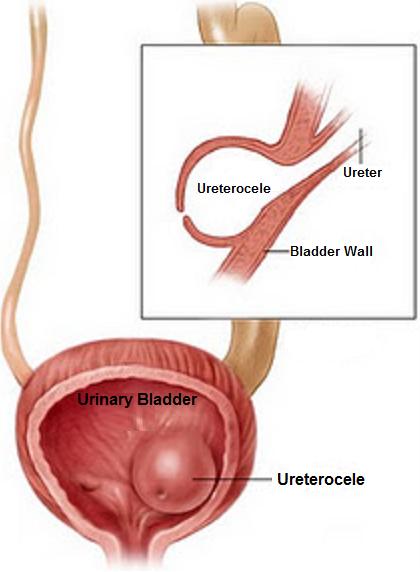Ureterocele is termed as out-pouching with cystic of the distal ureter into the urinary bladder. Indications for surgical treatment for both pediatric and adult ureteroceles depending on the site of the ureterocele, the clinical condition, associated renal anomalies.

PROCEDURE:
-
Endoscopic puncture is the least invasive treatment for ureterocele decompression. This is an perfect method for a neonate with ureterocele-induced obstructive uropathy and sepsis.
-
It is also performed securely in adults with a symptomatic ureterocele. Other indications may include a single system intravesical ureterocele with obstacle or a duplex system ureterocele with undetermined function of the affected renal moiety.
-
It was performed via cystoscope, in this a small puncture is made at the base of the ureterocele. This technique is usually done by using a 3F Bugbee electrode.
-
The thermal injure to the adjacent tissue consequently results in an opening bigger than 3F. With a thick-walled ureterocele, either a larger puncture or cut or multiple punctures can be required to establish drainage.
-
Multiple endoscopic procedures may be required to successfully decompress an ectopic ureterocele.
-
This method also allows palliative decompression in children at high risk, so that definitive reconstruction can be postponed until an adequate healing period has occur.
-
Antibiotic prophylaxis should be injected postoperatively in pediatric patients until a VCUG can be perform to assess for vesicoureteral reflux. Ectopic ureterocele and duplicated system are linked with a significantly superior rate of secondary procedures, which is most often related to the presence of reflux.
-
Endoscopic treatment provides best therapy in only 10-40% of patients with ectopic ureteroceles, compared to 80-90% of patients with a single system intravesical ureterocele.

